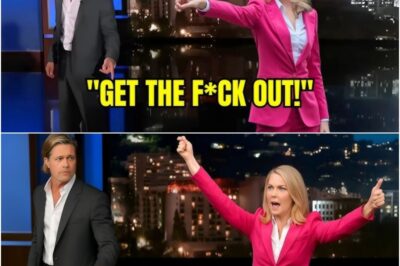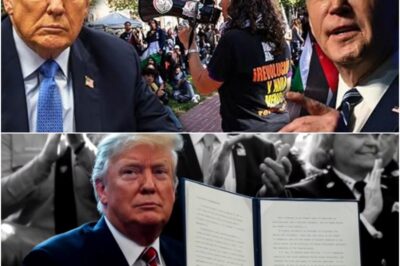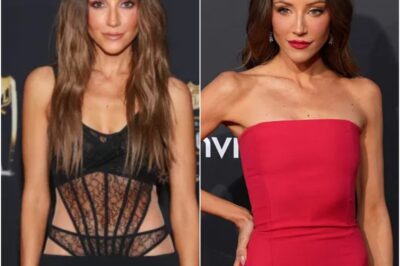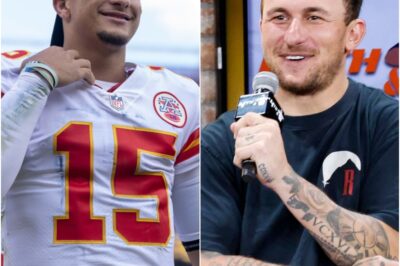BREAKING: House Settlement Approved, College Athletics Undergo Massive Change With Schools Now Paying Athletes
House Settlement approval marks another major shift in college athletics.
After a few years of battling behind the scenes to come up with a solution that would settle a lawsuit that would change the face of college athletics, the House settlement has finally been approved. Now we are headed into uncharted territory, with plenty of questions still to be answered.
It might have taken over two weeks for Judge Claudia Wilken to issue her approval, but at 9:15 p.m. ET on Friday night, the collegiate sports we once knew is now gone.
As you’ve watched this play out over the last number of years, with plenty of setbacks along the way, former collegiate athletes were looking to get a cut of the pie that they missed out on due to NIL not being around during their playing days.
According to the order filed, schools will have roughly $20.5 million to share with their athletes. This will be broken up into different sports, which is at the discretion of each school participating in the revenue-sharing.
Now, we are living in the era where players who are looking to cash-in on their NIL, will be dealing directly with the school itself, while third-party collectives will still be around at most schools. It started with the Ed O’Bannon case, which was a fight over whether former and current athletes should be paid for their likeness being used in video games. This led to the dam opening, and more players taking the NCAA to court over their current NIL rights.

TO READ THE FULL APPROVAL ORDER, CLICK HERE
What we got in return was a settlement that would see college athletes being paid by the schools themselves, which was illegal up until this point. Clearly, all hell has broken loose in the NIL circles, as what you are seeing today has nothing to do with actual name, image and likeness, but more so, players getting paid to play at a particular school.
By the way, there is nothing wrong with these athletes getting paid to play sports. But let’s not act as if this is anything other than that.

According to multiple sources, MLB executive Bryan Seeley is set to be named CEO of the newly formed ‘College Sports Commission’ that will be the enforcement arm of the House settlement, along with providing guidance on traversing this going forward
There will be an initial salary cap that each school must abide by, which should hover around the $20.5 million range for the first year, before it increases on a yearly basis.
In her order, Judge Wilken also said she is unclear whether the upcoming revenue-sharing cap is a violation of antitrust law. This will certainly lead to lawsuits being filed that are connected to the cap placed on NIL payments from the schools themselves.
There Will Be Further Lawsuits Regarding NIL, Along With Third Party Deals
One of the more interesting arguments made in her order had to do with payments made by collectives, or through deals that schools present to athletes.
“The NCAA shall not have any Division I rules prohibiting student-athletes from receiving payments from third parties for NIL, other than as set forth in this Injunctive Relief Settlement. For the avoidance of doubt, entities or organizations that are owned, controlled, or operated by Member Institutions and/or conferences are not third parties.
“Subcontractors of a Member Institution will not be considered third parties in instances and to the extent they are acting as an agent, facilitator, and/or administrator for a Member Institution whereby they are making payments to student-athletes that originate from/are paid by a Member Institution.”
How NIL Deals Will Be Determined If Fair From
There will be three evaluation determining factors for NIL deals with the clearinghouse that will either approve or deny a deal that is submitted through the ‘NIL-Go’ software program.
–Payor association: “The relationship between the payor and the student-athlete’s school”
–Valid Business Purpose: “Whether the payor is seeking the use of the student-athlete’s NIL for a valid business purpose, meaning to sell a good or service to the public for profit”
–Range of Compensation: “Whether the compensation paid to the student-athlete is commensurate with compensation paid to similarly situated individuals”
On Friday night, Boise State athletic director Jeramiah Dickey took to social media to make a point about the need for collective bargaining with athletes in college sports.
“Collective bargaining discussions need to happen…let’s curiously question bc what we’re currently doing continues insanity. We have a responsibility to find solutions…Agent regulations…low hanging fruit”
$2.8 Billion In Back Damages Have To Be Paid Out
Athletes who could not earn money by using their own NIL before its inception in 2021 would be owed a payout from the settlement. This monetary figure was a negotiated settlement that would cost the NCAA and its power conferences significantly less than what they would’ve had to pay if this case ended up going to trial.
There will be upwards of $20 billion in revenue-sharing that will go towards athletes in the future.
In her ruling, Judge Claudia Wilken had this to say about the revenue-sharing cap.
“The pool spending cap will permit schools that choose to opt-in to the IRS to provide benefits and compensation to Division ! student-athletes of approximately $20 million per year per school. This is a dramatic increase from the $5,980 per student athlete per year that was permitted in Alston, and from the $5,000 per student-athlete per year that the Ninth Circuit reversed in O’Bannon.”
The athletes who are going to be paid had to sign up for this through the settlement terms, and will receive a check. Right now, these athletes can see their payout through an online portal that’s currently available. Some of these payouts will obviously be higher than others, so it will be interesting to see how much some athletes make when this is finalized.
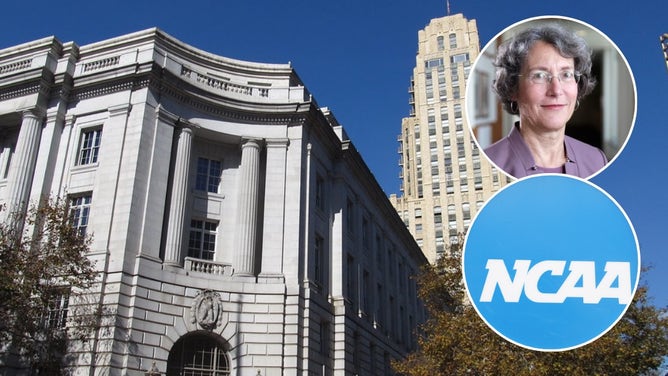
Judge Claudia Wilken holds all the power with the House settlement
NIL Deals With Third Parties Allowed, But Have To Be Cleared
One of the biggest aspects of this new settlement will be how athletes can make money from third-party deals. According to the settlement, players who are presented NIL deals that are more than $600 will have to submit them to a clearinghouse, which is actually being run through a company called ‘Deloitte,’ which is calculated by computer software.
This will be an independent group that makes up the clearinghouse committee, which will take a look at deals that they feel might violate the rules put into place. If a deal is not deemed worthy, which means it’s not legal under the new rules, it will be denied. This could also lead to schools potentially getting into trouble, though the NCAA is struggling with its power right now.
Simply put, if your school is putting together an NIL deal, whether that’s from the athletic department itself or the collective, it has to be approved if it’s over $600. And by the way, there won’t be many, if any, deals that are under that amount. So, schools are preparing for a number of different situations with the enforcement arm of this settlement.
It will be interesting to see how this plays out, as a number of states have passed laws that would exclude state universities from following rules that are put into place by the settlement. Also, some states have passed laws where revenue made from NIL would not be subject to state income taxes, which has caused quite a stir around the country.
Schools Will Now Pay Players Directly. There Will Be A Cap On Annual Revenue
The biggest component of this entire settlement is the new rules that allow schools to pay their athletes directly. Think about that one for a minute. Just five years ago, universities would face the harshest of punishment from the NCAA if they were caught paying players.
But now, there will be checks sent out, or weekly wire transfers, sent to the athletes from the schools. Every month, a player will receive a payment from the athletic departments of participating institutions, which is fascinating.
According to multiple sources, there is a fear that schools are going to have a hard time putting a limit on how much boosters are going to spend.
The revenue cap is scheduled to be around $20.5 million per year, which every school will disperse in different ways. A majority of big-time schools will spend their money on football rosters, while the remaining amount will go to other sports. This means that the football program could spend upwards of $16 to $17 million on football alone.
The other interesting part is that there are plenty of schools that do not have a powerful football program, or even a football team at all, so they can spend a majority of that money on basketball. This will see some schools have a leg up on others in different sports, which should translate into a Big East school like Villanova spending $15-$16 million on the basketball team, while schools from the SEC or Big Ten are spending upwards of $3 to $4 million on the revenue-sharing agreement.
Will other schools decide to spend more money on basketball and baseball compared to others? This could lead to programs having to shut down athletic programs, based off the amount of money being made, along with the allotted sums.
Players have already started signing contracts with schools under the presumption that the settlement would be approved, which is another reason why you have seen a plethora of athletes have their new deals ‘front-loaded.’ All this did was get a majority of their contract off the books, so that it would not count toward the revenue-share cap that was agreed to.
This is obviously a landmark moment for college athletics, just as the inception of NIL was in 2021. But with this settlement, everything you once knew about sports at the collegiate level has now changed. What was once taboo, is now legal.
Schools will start cutting checks to athletes, and what we once characterized as ‘amateur sports’ has shifted to a more professional model. The only thing missing is the athletes being able to collectively bargain, which I would imagine is the next step on the crazy rollercoaster that has changed college athletics forever.
News
Brad Pitt Storms Off Set After A Heated Clash With Karoline Leavitt That Left Everyone In Shock And No One Saw Coming
When Hollywood Met the White House: Brad Pitt vs. Caroline Levit—The Showdown That Shook America .I. The Calm Before the…
President Trump Responds To The Shocking Return Of Alleged Gang Member Kilmar Abrego Garcia And Promises The Courts Will Reveal Just How Dangerous He Really Is
President Trump responds to return of alleged gang member Kilmar Abrego Garcia to US Trump expressed confidence in the DOJ,…
Joy Behar Shut Down By Karoline Leavitt After One Shocking Question Turns The Entire Segment Into A Viral On-Air Showdown
Caroline Leavitt vs. Joy Behar: The Viral Showdown That Shook The View—and America I. The Stage Is Set On a…
PHOTO: DeAndre Hopkins Caught Sliding Into Sydney Sweeney’s Instagram With Bold One-Word Comment and Fans Are Losing Their Minds
PHOTO: DeAndre Hopkins Caught Shooting His Shot At Actress Sydney Sweeney With Shocking One-Word Admission On Her Seductive Instagram Pics…
PHOTO: Kay Adams Sets Social Media On Fire With Jaw-Dropping Bathrobe Photo and Fans Are Losing It
Kay Adams (Photo via Instagram) Kay Adams might be in the offseason, but she’s still lighting up the timeline. The former Good…
Johnny Manziel Recalls Wild Story About Patrick Mahomes That Nearly Changed The Course Of NFL History
Patrick Mahomes’ career has been on a constant rise since he took over the starting job in Kansas City. It’s…
End of content
No more pages to load

